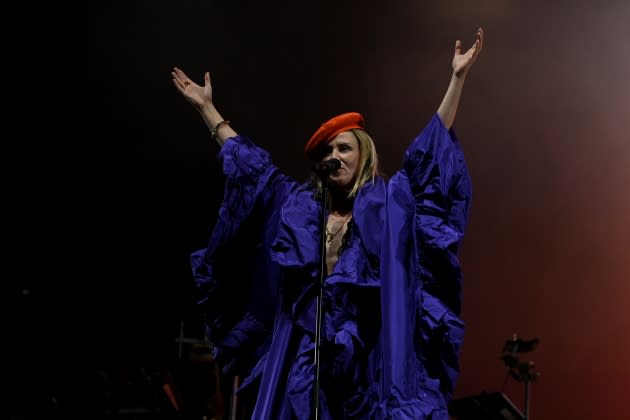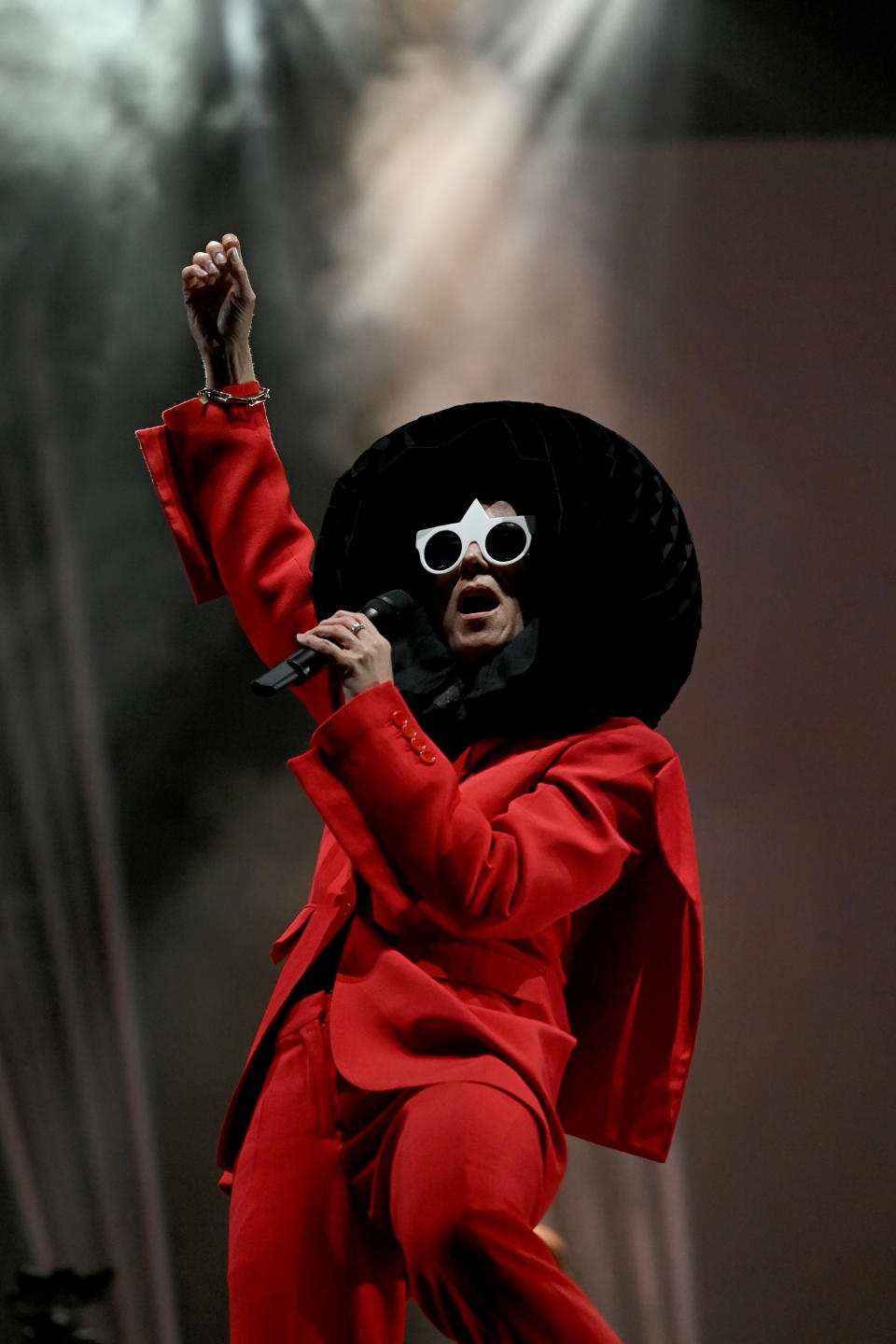Five Minutes with Róisín Murphy
- Oops!Something went wrong.Please try again later.

For Róisín Murphy, toying with pop culture and iconography has been a daily duty throughout her career, since she came across and became part of the British underground club scene at 19. After a prolific career as one half of the electro-pop duo Moloko, she went on with a solo gig starting in 2003 with her debut album “Ruby Blue,” followed by 2007’s release of “Overpowered.”
Artworks for both, as well as her stage performances, have shown her penchant for over-the-top fashion from the likes of Viktor & Rolf and Gareth Pugh — yet she can easily trade outrageous concoctions for a laid-back cashmere sweat and as of late has been more into young talents fresh off collage than established names.
More from WWD
After putting the last touches on her upcoming album produced by Dj Koze and due out in the early summer of 2023, she flew to Trieste, Italy, to be part of the International Talent Support contest’s jury.
While there, she found a few minutes to chat with WWD about her style icons, fashion and more.
WWD: How do you as a person select your fashion as opposed to you as an artist?
Róisín Murphy: I’m more casual in life than I am onstage, stage is accented, and part of my performance is that fighting, actually, with clothes, with identity and struggling with archetypes and I have a sense it could go wrong and so I’m well-known for pulling trousers in front of everyone and suddenly something turn into another thing, another emotion. I do always say that my favorite performers can pick up masks and shine through the mask. I think the same is true with clothes, with the hair and makeup, whenever you need to have it and you also need to be able to take it off. I think it’s about trying to catch a balance between showing me with nothing and me with everything and onstage it’s in between.
WWD: Do you have any style icons that you’ve been looking up to recently?
R.M.: Recently for me the biggest icons are Italians, Mina and Patty Pravo, I did versions of their songs. When I started to research them I found an affinity and I found something more modern in their presence than I expected and I found female archetypes at the center of immense grandiosity, like in the middle of an incredible TV studio, the like of which would never be built now, and then an amazing camera man on a crane flying through this modern colosseum, incredible stage set, maybe Expressionist stage set, and then lighting and orchestra and audience. They fly in and they are so steady in the middle of it, they shine over the rest of it, and still when it gets to their face and their eyes, they shine a light of wiliness inside the performance. If you can hold that weight, and still all the emotions, comedy, tragedy, romance, degradation, strength — all at once in a performance. It’s just totally timeless.

WWD: What’s your favorite piece of clothing and favorite designer?
R.M.: I don’t have a favorite piece of clothing, but I always think about cashmere when I think about favorite gear, and in terms of designer I’ve been wearing a lot of this French guy named Clément Picot, he’s amazing. I love Instagram to make findings on fashion.…When I’m choosing stuff to perform in, I have to think modules so the last thing I’d want to wear are those that don’t work within the system of the show, which takes a while to work out, which is why sometimes it’s just a disaster. I usually start on night one onstage, I don’t rehearse it, with the clothes, I have to work it out in my head like some kind of modular system.
WWD: You’ve always used fashion as a tool of artistic expression, haven’t you?
R.M.: Me as a child, I’ve always dressed up and exhibited myself and many people would presume that I was a natural exhibitionist and considered that as being very egotistic when it’s not, it’s like being a painter, it’s exactly the same. It’s just that you tell the story through yourself, it’s a desire, it’s like a burning thing, I’ve got to tell the story through something, so I use myself.
Best of WWD

